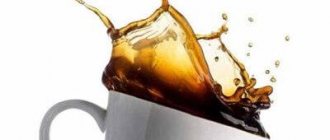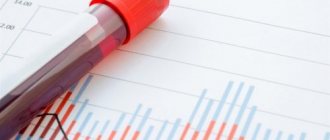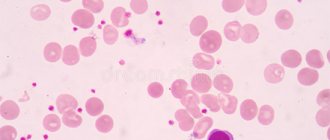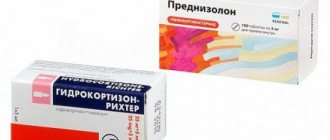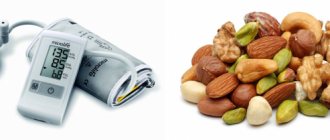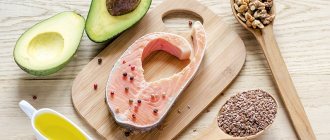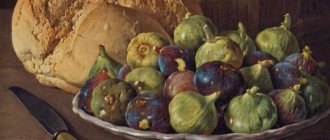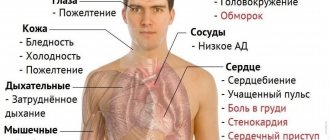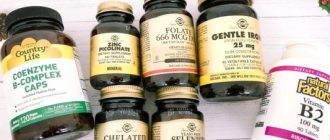Reduced hemoglobin comprehensively worsens the condition of the body, since in this case all organs and tissues experience oxygen starvation.
And this is complemented by an increased load on the cardiovascular system - the body simply accelerates blood flow to increase the flow of oxygen.
Hemoglobin deficiency and anemia are especially dangerous in preschool children - this often provokes the development of pathologies of the nervous system, which ultimately leads to mental retardation.
According to numerous studies , hemoglobin levels can be regulated by diet, including or excluding iron-containing foods from the diet.
We have compiled a rating of the 20 most effective foods that should be included in your diet to increase the concentration of hemoglobin in the blood. We will also describe general principles of nutrition and recommendations from doctors.
Let's remember that in the last article we looked at 7 products that reduce hemoglobin levels.
General rules
The overwhelming number of diseases of the hematopoietic system occur with anemia , in which there is a decrease in the amount of hemoglobin per unit volume of blood, mainly with a simultaneous decrease in the total volume of red blood cells (or their number).
Anemia is one of the symptoms of various diseases or pathological conditions. Among the large set of anemias in clinical practice, the most common (up to 85% of cases) are anemia caused by a lack of iron in the body. This condition causes a disruption in the synthesis of iron-containing proteins, as a result of which oxygen deficiency develops in the body and the processes of cellular respiration are inhibited with the development of dystrophy in the organs and tissues of the body and disruption of their functions.
Other types of anemia : vitamin B12 deficiency anemia , folate deficiency anemia , hemolytic , sickle cell anemia are less common, but are also accompanied by similar symptoms.
The level of plasma iron is determined by the processes of synthesis and breakdown of red blood cells. The human body contains on average 3 to 5 g of iron in bound form. In the process of hematopoiesis, iron is used from the blood depot. Iron losses in the body are replenished with iron contained in food. Therefore, the nutritional factor is the leading factor in the development of iron deficiency anemia. However, iron from food is only absorbed by 10–20%, that is, the amount of iron consumed from food should be 5–10 times the daily requirement, which averages 10 mg/day for men with a loss level of about 1 mg/day and 18 mg/day for women with a loss level of up to 2 mg/day. Iron loss in urine, feces, sweat, hair and nails.
If there is insufficient intake of iron into the body from outside, the iron depot . Those at high risk of developing anemia include women of childbearing age, elderly people and children (due to their high need for iron) and all people who do not consume enough iron-containing foods (particularly vegetarians).
The main objectives of therapeutic nutrition for iron deficiency anemia are:
- Providing the body with physiologically complete nutrition with a sufficient amount of iron for the process of hematopoiesis.
- Balance the intake of substances that enhance and inhibit iron absorption.
- Balance the content of heme (found in products of animal origin, part of hemoglobin) and non-heme (found in plant products ionic in the form of 2-3 valent iron) iron compounds in food, taking into account the iron content in products and the degree of digestibility of iron from them.
- Select and balance foods with low hemoglobin that provide sufficient calorie intake and the optimal content of proteins, fats, and carbohydrates in food.
Fried liver
Animal products high in iron (in mg/100 g of product) include:
- calf liver (7.9);
- beef liver (7.1);
- pork liver (22.1);
- chicken liver (17.5);
- oysters (9.2);
- beef kidneys (10.0);
- blood sausage (6.4);
- liverwurst (5.3);
- various types of meat (2.0–3.6);
- mussels (5.1);
- chicken yolk (6.7);
- beef tongue (4.1).
Products of plant origin that are leaders in iron content:
- wheat bran (11.0);
- flax seed (8.2);
- sesame (10.0);
- pistachios (3.7);
- soybean (9.7);
- oat flakes (4.6);
- buckwheat (6.2);
- spinach (2.7);
- peanuts (4.5).
Products that increase hemoglobin levels in the blood should be included in every meal.
The diet for low hemoglobin is based on dietary Table No. 11 (option with a high protein content). The energy value of the diet is 3200-3400 Kcal (120 g of proteins, of which 60% are animal proteins; fats - 90-100 g with the inclusion of at least 25% vegetable fats, carbohydrates -450 g; sodium chloride content - 12-15 g , free liquid - 1.5 -2.0 liters).
To increase hemoglobin, the following are introduced into the diet:
- various meat by-products, fish products (herring, balyk, caviar);
- canned food - sprats, sardines, etc.;
- non-fish seafood;
- vegetable oil and butter;
- full range of dairy products;
- chicken eggs;
- various cereals;
- vegetables fruits;
- honey;
- beverages.
Particular attention is paid to the issue of iron digestibility. of vitamin C and copper in your diet ascorbic acid to the diet increases the absorption of iron, since ascorbic acid takes an active part in the process of iron absorption. Adding juice from citrus fruits increases the absorption of iron from bread, cereals, and eggs.
Foods rich in copper include: apricots, cherries, dried figs, brown algae, seaweed, green vegetables. In order to improve the absorption of iron, iron oxide and ferrous sulfate , iron glycerophosphate and gluconate .
Iron absorption is suppressed by strong tea and foods rich in tannins. Chocolate, egg yolk, cocoa, as well as foods rich in vitamin D (dairy products), which should be limited in the diet, worsen the process of iron absorption. To reduce their negative effects, it is recommended to consume them separately from other products.
Almost all types of culinary processing of foods are allowed (baking, stewing, boiling, steaming), except for frying, since this process produces oxidation products that negatively affect the body, and also uses a lot of fat, which is contraindicated for anemia. The food temperature is standard (15-60 degrees Celsius).
For B12-deficiency anemia, the diet includes foods that are the main sources of vitamin B12 (per 100 mg of product): beef liver - 60 mcg; chicken liver - 16 mcg; pork liver - 30 mcg; beef - 2.6 mcg; mackerel - 12 mcg; rabbit meat - 4.3 mcg; pork - 2 mcg; cod - 1.6 mcg; carp - 1.5 mcg; chicken egg - 0.5 mcg.
For folate deficiency anemia (lack of vitamin B9 ), the diet includes foods containing a lot of folic acid, both animal and plant origin: liver, pork, beef, poultry, fish, lamb, eggs, milk and dairy products, legumes, wheat yeast and sprouts, buckwheat and oatmeal, bran, cereals, green leafy vegetables, nuts, yeast, apricots, pumpkin, mushrooms, beets, bananas, melon, dates, bread.
Subtleties of increasing hemoglobin
Iron-rich foods are the best way to combat low hemoglobin.
Pomegranate fruits, which have “deposits” of iron, effectively help increase the level of this iron-containing complex protein. The juice made from them is also useful.
Red grape wine is an effective assistant in increasing hemoglobin. However, this drink is prohibited for expectant mothers.
Even a diet menu based on the use of iron-containing dishes does not guarantee success. The production of hemoglobin that occurs in the body depends not only on this substance. You also need to take care of your copper intake.
Pear is a fruit that speeds up the process of restoring healthy levels of iron-containing protein. It is often recommended by doctors for patients suffering from anemia, especially if iron supplements do not produce results.
Honey not only improves the situation with hemoglobin, but also has a restorative effect on the body. It is recommended to eat about 50-70 g of healthy sweets every day.
The absorption of iron will become better if you include foods rich in vitamin C. The best effect is provided by freshly squeezed fruit drinks and citrus fruits. Buckwheat contains folic acid, which activates the process of hematopoiesis. Bananas are recognized as a supplier of vitamin B6, without which hemoglobin cannot be normalized.
There are also a number of long-acting drugs:
- heferol;
- ferrogrademet;
- ferrograd;
- irovit;
- sorbifer durules;
- fefol;
- Tardiferon-retard.
Drugs that are effective for a short period of time are ferrous gluconate, ferrous fumarate, ferrous sulfate.
Traditional medicine offers its own methods of combating low hemoglobin.
The following recipes will be useful:
- Raisins, prunes, dried apricots and walnuts are taken in equal quantities and mixed thoroughly. The resulting mixture is processed using a meat grinder and supplemented with a small amount of honey. Every day you need to consume this sweet dish in the amount of 6 tablespoons.
- Freshly squeezed carrot juice is effective in increasing hemoglobin; 300-400 ml per day will benefit the body. Beetroot juice is mixed with honey in equal proportions, the mixture is consumed in the amount of 2 tablespoons three times a day.
- Red clover helps normalize the substance. 4 heads of the plant are dissolved in boiling water and infused for half an hour. Treatment lasts for a month, the mixture is consumed half a glass three times a day, preferably taken before meals.
- “Compote” made from fresh juices mixed in equal (100 g) parts effectively helps increase hemoglobin. Necessary juices: apple, carrot, beetroot, pomegranate. You should add 50 g of honey, consume 2 spoons three times a day.
- Blue blackberry (2 parts leaves), mixed with white clasp grass (2 parts), St. John's wort grass (3 parts). Take a tablespoon of the resulting composition and pour it with a glass of boiled water. Infuse the mixture for three hours, take a spoon three times a day for 30 days.
Authorized Products
Nutrition for low hemoglobin is based on the inclusion in the diet of foods containing the maximum amount of iron: internal organs and offal (beef and chicken liver, chicken stomachs and hearts, beef tongue), red meat (beef), meat products (ham, sausage, frankfurters), fish and fish products (caviar, balyk, sprats, sardines), seafood (mussels, shrimp, squid), butter and vegetable oil.
As for dairy products, it is useful to include cheeses, cottage cheese, and fermented milk products in your diet. Soups and all first courses are prepared in strong meat or fish broth. To prepare a side dish with a low iron content, you can use almost all types of cereals, legumes and pasta.
It is recommended to include sufficient quantities of wheat/rye bread and flour products (bakery, baked pies, biscuits) in the diet. All vegetables and fruits are allowed in any culinary processing; it is especially important to include in the diet fruits and vegetables with a high content of ascorbic acid (citrus fruits, rose hips, chokeberries, black currants). The diet should contain various dried fruits - dried apricots, raisins, prunes, figs; seeds and nuts - almonds, pistachios, peanuts, cashews, walnuts, sunflower seeds, pumpkin.
Vegetable and leafy salads are very healthy. Therapeutic nutrition involves the inclusion of sweet foods and dishes made from them (honey, jams, preserves) into the diet. Honey is especially useful. The fructose it contains promotes the absorption of iron in the intestines. It is preferable to consume dark varieties of honey as they contain more copper, iron and manganese. If acidity is low, honey is consumed immediately before meals, and if acidity is high, honey should be consumed 1.5 hours before meals. In the absence of contraindications, you are allowed to eat up to 50 g of honey per day. As for drinks, be sure to include in your diet a decoction of wheat bran and rose hips, vegetable and fruit juices, especially beet juice.
Table of permitted products
| Proteins, g | Fats, g | Carbohydrates, g | Calories, kcal | |
Vegetables and greens | ||||
| boiled cauliflower | 1,8 | 0,3 | 4,0 | 29 |
| boiled potatoes | 2,0 | 0,4 | 16,7 | 82 |
| boiled carrots | 0,8 | 0,3 | 5,0 | 25 |
| salad pepper | 1,3 | 0,0 | 5,3 | 27 |
| boiled beets | 1,8 | 0,0 | 10,8 | 49 |
| dill | 2,5 | 0,5 | 6,3 | 38 |
Fruits | ||||
| apricots | 0,9 | 0,1 | 10,8 | 41 |
| oranges | 0,9 | 0,2 | 8,1 | 36 |
| cherry | 0,8 | 0,5 | 11,3 | 52 |
| grapefruit | 0,7 | 0,2 | 6,5 | 29 |
Berries | ||||
| cranberry | 0,5 | 0,0 | 6,8 | 26 |
| gooseberry | 0,7 | 0,2 | 12,0 | 43 |
| Rowan | 1,5 | 0,1 | 10,9 | 50 |
| currant | 1,0 | 0,4 | 7,5 | 43 |
| rose hip | 1,6 | 0,0 | 14,0 | 51 |
Nuts and dried fruits | ||||
| nuts | 15,0 | 40,0 | 20,0 | 500 |
| prunes | 2,3 | 0,7 | 57,5 | 231 |
Cereals and porridges | ||||
| buckwheat (kernel) | 12,6 | 3,3 | 62,1 | 313 |
| oat groats | 12,3 | 6,1 | 59,5 | 342 |
| cereals | 11,9 | 7,2 | 69,3 | 366 |
| Wheat groats | 11,5 | 1,3 | 62,0 | 316 |
| wheat bran | 15,1 | 3,8 | 53,6 | 296 |
Bakery products | ||||
| wheat bread | 8,1 | 1,0 | 48,8 | 242 |
| whole grain bread | 10,1 | 2,3 | 57,1 | 295 |
Confectionery | ||||
| jam | 0,3 | 0,1 | 56,0 | 238 |
Raw materials and seasonings | ||||
| honey | 0,8 | 0,0 | 81,5 | 329 |
Dairy | ||||
| condensed milk | 7,2 | 8,5 | 56,0 | 320 |
| kefir 3.2% | 2,8 | 3,2 | 4,1 | 56 |
| cream 15% (low fat) | 2,3 | 15,0 | 3,6 | 161 |
| sour cream 15% (low fat) | 2,6 | 15,0 | 3,0 | 158 |
Cheeses and cottage cheese | ||||
| cheese | 24,1 | 29,5 | 0,3 | 363 |
| cottage cheese | 17,2 | 5,0 | 1,8 | 121 |
Meat products | ||||
| lean pork | 16,4 | 27,8 | 0,0 | 316 |
| pork liver | 18,8 | 3,6 | 0,0 | 108 |
| beef | 18,9 | 19,4 | 0,0 | 187 |
| beef liver | 17,4 | 3,1 | 0,0 | 98 |
| beef brains | 9,5 | 9,5 | 0,0 | 124 |
| calf liver | 19,2 | 3,3 | 4,1 | 124 |
| mutton | 15,6 | 16,3 | 0,0 | 209 |
| rabbit | 21,0 | 8,0 | 0,0 | 156 |
| ham | 22,6 | 20,9 | 0,0 | 279 |
| liver pate | 11,6 | 28,9 | 2,5 | 317 |
| beef stew | 14,1 | 17,4 | 0,0 | 214 |
Sausages | ||||
| smoked sausage | 16,2 | 44,6 | 0,0 | 466 |
| blood sausage | 9,0 | 19,5 | 14,5 | 274 |
| beef sausages | 11,4 | 18,2 | 1,5 | 215 |
Bird | ||||
| chicken liver | 20,4 | 5,9 | 1,4 | 140 |
| turkey | 19,2 | 0,7 | 0,0 | 84 |
| turkey liver | 19,5 | 22,0 | 0,0 | 276 |
| goose liver | 15,2 | 39,0 | 0,0 | 412 |
Eggs | ||||
| chicken eggs | 12,7 | 10,9 | 0,7 | 157 |
Fish and seafood | ||||
| brown algae | 1,7 | 0,6 | 8,3 | 43 |
| pink salmon | 20,5 | 6,5 | 0,0 | 142 |
| Red caviar | 32,0 | 15,0 | 0,0 | 263 |
| cod roe | 24,0 | 0,2 | 0,0 | 115 |
| pike caviar | 17,3 | 2,0 | 0,0 | 87 |
| squid | 21,2 | 2,8 | 2,0 | 122 |
| shrimps | 22,0 | 1,0 | 0,0 | 97 |
| salmon | 19,8 | 6,3 | 0,0 | 142 |
| mussels | 9,1 | 1,5 | 0,0 | 50 |
| seaweed | 0,8 | 5,1 | 0,0 | 49 |
| herring | 16,3 | 10,7 | — | 161 |
| cod (liver in oil) | 4,2 | 65,7 | 1,2 | 613 |
| trout | 19,2 | 2,1 | — | 97 |
Oils and fats | ||||
| vegetable oil | 0,0 | 99,0 | 0,0 | 899 |
| butter | 0,5 | 82,5 | 0,8 | 748 |
| olive oil | 0,0 | 99,8 | 0,0 | 898 |
| * data is per 100 g of product | ||||
Which nuts increase hemoglobin?
Of the nuts that are used in the fight against low hemoglobin, walnuts are the most useful. The product contains iron, potassium, magnesium, cobalt, and a large number of vitamins. This composition allows it to stimulate the process of synthesis of the necessary substance and have a strengthening effect on a weakened body.
Eating nuts in combination with raisins is beneficial for hemoglobin. Half a glass of raisins is soaked in water for 2 hours. Then the water is drained, the raisins are mixed with walnuts (20 g is enough). The dish is divided into three servings, the approximate volume of each serving is a couple of tablespoons.
You can also try a combination of nuts with cranberries and honey. All these elements are mixed using a blender.
Fully or partially limited products
Excluded from the diet are very fatty meats, fish and poultry, culinary, beef and lamb fat, spices, fatty and very hot sauces, pastries and cakes with a large content of cream.
Limit foods high in calcium (milk and dairy products, parsley), tannin and caffeine (coffee, strong tea, chocolate, Coca-Cola), as they interfere with the absorption of iron.
Drinking alcohol in case of iron deficiency anemia is completely excluded, since ethyl alcohol negatively affects the liver and disrupts the absorption of iron and flavocins .
Table of prohibited products
| Proteins, g | Fats, g | Carbohydrates, g | Calories, kcal | |
| cake | 3,8 | 22,6 | 47,0 | 397 |
| chocolate | 5,4 | 35,3 | 56,5 | 544 |
| mayonnaise | 2,4 | 67,0 | 3,9 | 627 |
| sour cream 30% | 2,4 | 30,0 | 3,1 | 294 |
| pork fat | 1,4 | 92,8 | 0,0 | 841 |
| rendered beef fat | 0,0 | 99,7 | 0,0 | 897 |
| cooking fat | 0,0 | 99,7 | 0,0 | 897 |
| rendered pork fat | 0,0 | 99,6 | 0,0 | 896 |
| white dessert wine 16% | 0,5 | 0,0 | 16,0 | 153 |
| dry red wine | 0,2 | 0,0 | 0,3 | 68 |
| vodka | 0,0 | 0,0 | 0,1 | 235 |
| cognac | 0,0 | 0,0 | 0,1 | 239 |
| liquor | 0,3 | 1,1 | 17,2 | 242 |
| beer | 0,3 | 0,0 | 4,6 | 42 |
| cola | 0,0 | 0,0 | 10,4 | 42 |
| coffee | 0,2 | 0,0 | 0,3 | 2 |
| Pepsi | 0,0 | 0,0 | 8,7 | 38 |
| black tea | 20,0 | 5,1 | 6,9 | 152 |
| energy drink | 0,0 | 0,0 | 11,3 | 45 |
| * data is per 100 g of product | ||||
What fruits increase hemoglobin?
Modern research has found that the first fruit in the fight against iron deficiency is the fresh peach. 4 mg are present in 100 g of fresh product, in dried - about 3 mg. The following fruits are also relevant.
- Quince. Adding 100 g to the menu provides 3 mg of iron.
- Persimmon. Eating 100 g of fruit “gives” the body 2.5 mg of iron.
- Pear. In addition to iron (2.3 mg), the fruit is rich in zinc, manganese, cobalt, copper, and is effective in treating anemia.
- Apple. For a long time it was considered the number one fruit in the list of fruits that increase the concentration of hemoglobin in the body. When fresh, 100 g of apples contain 2.2 mg. The indicators of dried fruits look better - approximately 2.7 times more.
- Pomegranate. By eating 100 g of the product, you can replenish iron reserves by 1 mg. It is also good for its abundance of valuable vitamins.
- Apricot. It is best consumed in dried form, the concentration of essential elements increases. The fresh product is also useful - 0.7 mg. In addition to iron, apricots contain cobalt, manganese, and copper. All these elements together are useful for anemia and activate hemoglobin biosynthesis.
- Kiwi (0.8 mg) and fresh plums (0.5 mg) will be beneficial for the body.
- Watermelon is famous for its high concentration of iron; its consumption can enrich the body with other valuable substances - potassium, vitamins. Not only is the hemoglobin level restored, but also energy increases, and the person gets rid of chronic weakness.
Iron absorption is a process that occurs in the proximal intestine. There are certain foods that contain phytates and phosphates that inhibit it. The solution to the problem will be to include in the menu fruits that activate the absorption of iron and are endowed with vitamin C. The most beneficial will be all citrus fruits, melon, pineapple, and sour apples.
Comments from nutritionists
Quite often the question is asked: “How to increase hemoglobin for a vegetarian?”
Indeed, a certain problem exists, especially in cases where a person practices strict vegetarianism. Since the absorption of iron in the intestines is largely determined by the nature of the food and the calorie content of the daily diet, many vegetarians develop iron deficiency over time, since heme iron is absent in food products, and non-heme iron contained in cereals and vegetables has extremely low absorption. In addition, the higher fiber content of vegetarian foods interferes with the absorption of iron. Therefore, if your diet does not contain animal hematopoietic foods, you need to be especially attentive to your diet in order to sufficiently provide your body with iron.
It can be recommended to include in the diet a sufficient amount of foods rich in ascorbic acid , which significantly increases the absorption of iron. In order to prevent the development of anemia, you should periodically take iron-containing medications, for example, Ferro-Folgamm , which contains a balanced combination of anhydrous iron sulfate, folic acid , cyanocobalamin and ascorbic acid .
What vegetables increase hemoglobin?
Beetroot helps to cope most effectively with iron deficiency; it is useful in raw or boiled form. This product ensures the regeneration of iron content, “starts up” red blood cells, and enriches the blood with oxygen. Other vegetables will help increase hemoglobin.
- Carrot. The product is consumed fresh, can be added to salads, and can be boiled.
- Tomato. The vegetable improves blood composition, saturates it with essential elements, and prevents the formation of blood clots. Tomatoes do not lose valuable qualities after heat treatment.
- Potato. The vegetable is saturated not only with iron, but also with other useful elements - calcium, phosphorus, potassium, magnesium, vitamins and organic acids. It is included in the menu boiled.
- Zucchini. The product is rich in iron, potassium and magnesium. The vitamin C content helps in the absorption of iron.
All of these vegetables strengthen the body, restore the functioning of the intestines, which makes the fight against low hemoglobin more effective.
Reviews and results
- “... I periodically go on this diet, because due to heavy periods my hemoglobin level is low. As a rule, after a month of dietary nutrition and taking iron supplements, everything returns to normal”;
- “... After a long stay on a mono-diet and the development of anemia, the doctor prescribed a therapeutic diet and said that although dietary nutrition for anemia is an important stage of treatment, it is not able to independently compensate for the iron deficiency in the body. Therefore, he prescribed iron tablets.”
Which berries increase hemoglobin?
Berries will also help improve hemoglobin levels when levels are low. You should definitely eat cranberries and black currants; the products are healthy not only fresh, but also frozen. Cranberries can be mixed with sugar. Strawberries, strawberries and blueberries are also recommended for iron deficiency.
A berry that is useful for anemia and anemia is rowan. To achieve the effect, you must eat at least a tablespoon daily.
Features of nutrition during pregnancy
During pregnancy, almost all vitamins are rapidly consumed in a girl’s body, including folic acid (B6). It is the last element that needs to be paid the most attention.
When carrying a child, folic acid is primarily used by the endocrine system to normalize the balance of sex hormones (which regulate the pregnancy process itself and prevent the premature birth of a child).
So, it is necessary to include bananas and fish in your diet (it contains omega-3 acids, which help absorb B vitamins).
The same goes for vegetables and fruits that contain iron. Some of these microelements are used by the body to form the cardiovascular system of the unborn child, so in women during this period, hemoglobin is constantly reduced (and remains so until the beginning of the third trimester of pregnancy).
Functions of iron in the body
Iron is the main component of hemoglobin
Main functions:
- Transport and storage of oxygen. The composition of red blood cells, whose task is to transport gases, includes hemoglobin. This protein contains four iron atoms that bind oxygen. As a result, oxygen is delivered to all organs and tissues and carbon dioxide is transported to the lungs.
- Iron is necessary for the functioning of the thyroid gland, which is responsible for metabolic processes.
- This trace element is associated with the transport of oxygen to cytochromes, which are energy protein molecules.
- Participation in the synthesis of hormones.
- Accelerates the growth processes of the body, nerve fibers, and ensures normal brain function.
- Iron is necessary for proteins and enzymes that are responsible for hematopoiesis, metabolism, cholesterol metabolism and much more.
- Affects the immune system in a certain way.
- Neutralizes toxins.
- Prevention of anemia.
- Has a positive effect on the condition of nails, skin and hair.
What should you avoid?
Almost all “non-red” berries lower hemoglobin. The strongest reducing effect is provided by:
- Sea buckthorn. Although it is an extremely healthy berry, it should not be consumed if you have low hemoglobin.
- Blueberry. It is very useful for vision, but it slightly reduces hemoglobin. If possible, it should be excluded from the diet if signs of anemia are present.
- Mulberry. This should include only white and blue mulberries, which contain a large amount of complex carbohydrates. But with increased hemoglobin, these berries are the most useful for thinning the blood. Mulberry is also “dangerous” because it contains many hard seeds right on its surface, which irritate the gastric mucosa. And increased acidity can slow down the process of normal absorption of iron. In general, this berry is conditionally the most “dangerous” for the cardiovascular system.
- Elder. Although it is rich in antioxidants that prevent the oxidation of red blood cells, it lowers hemoglobin. But for the immune system it is one of the most useful berries. If you are going to eat it, it is recommended to prepare various kinds of jams and preserves.
It is worth considering that many of the above berries are strong allergens. Therefore, children should be given them in very limited quantities, and it is better to make do with compotes and jelly based on various fruits. It will be much more useful.
Other Important Recommendations
At the same time, the diet should contain other food groups, among which, first of all, it is worth noting the following:
- fresh seasonal fruits - apples, mangoes, bananas, feijoas, citrus fruits, pineapples, red grapes;
- vegetables - beets, tomatoes, turnips, pumpkin, zucchini;
- greens, salads;
- porridge - buckwheat, rice, millet, oatmeal;
- oils - flaxseed, olive, sesame;
- liver - cod liver, pork, beef, chicken and turkey.
In general, your diet must be formed taking into account the individual characteristics of the body and in accordance with the recommendations of the supervising general practitioner. In some cases, it is advisable to include the diet in a limited dosage and for medicinal purposes, dry red wine, cognac and black natural coffee.
In addition, it is extremely important for the health of the entire body to lead a healthy lifestyle. By and large, this concept is based on not so complicated things:
- try to choose housing in a place with a clean environment;
- get rid of the habit of being nervous about any reason and experiencing stress;
- maintain a sleep schedule;
- drink enough clean water;
- to refuse from bad habits;
- spend time walking in the fresh air and playing sports.
What should be excluded from the diet?
A decrease in hemoglobin levels is facilitated by:
- Almost all dairy products. They contain protein and complex carbohydrates, which slow down the process of hemoglobin synthesis. Milk also thickens the blood.
- Pasta. This also includes all cereals. They interfere with the absorption of iron, oxidizing it while still in the gastrointestinal tract. Such a micronutrient is no longer suitable for the formation of hemoglobin cells.
- Chicken eggs. It is the protein they contain that lowers hemoglobin. In principle, any food based on protein slows down the absorption of iron.
- Wheat flour and all products derived from it. Regular consumption of wheat bread leads to a decrease in hemoglobin by an average of 15 g/l. Therefore, it is better to give preference to black or coarsely ground bread (bran).

